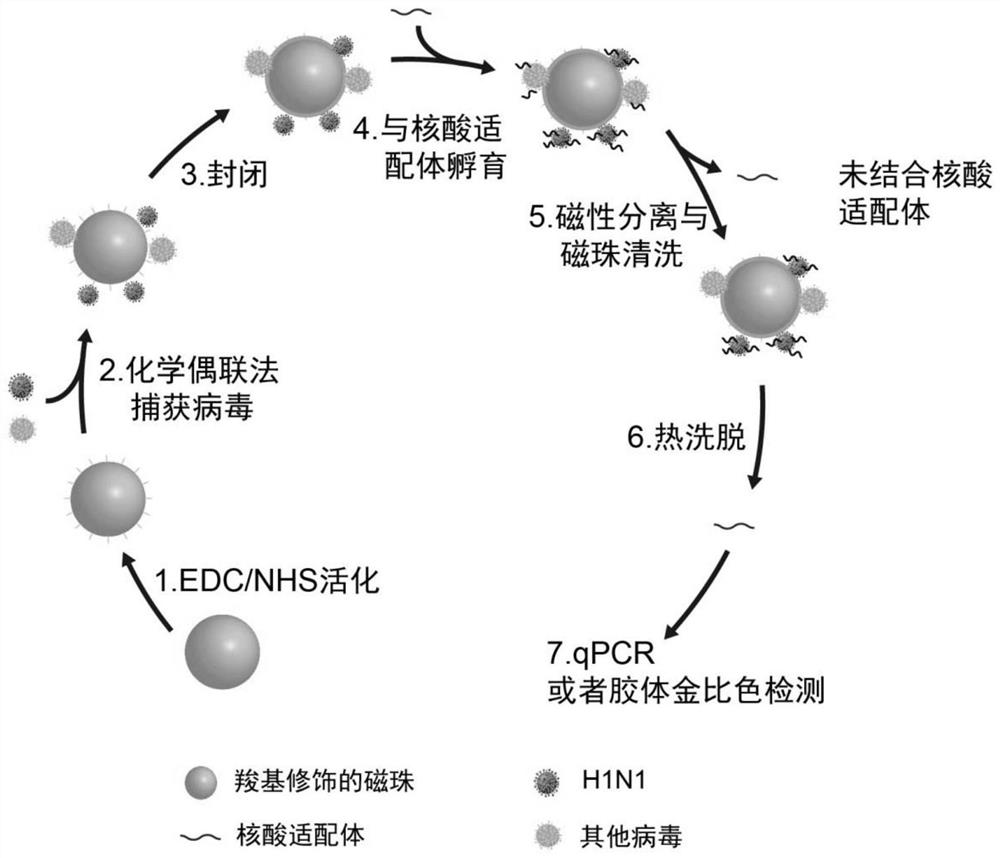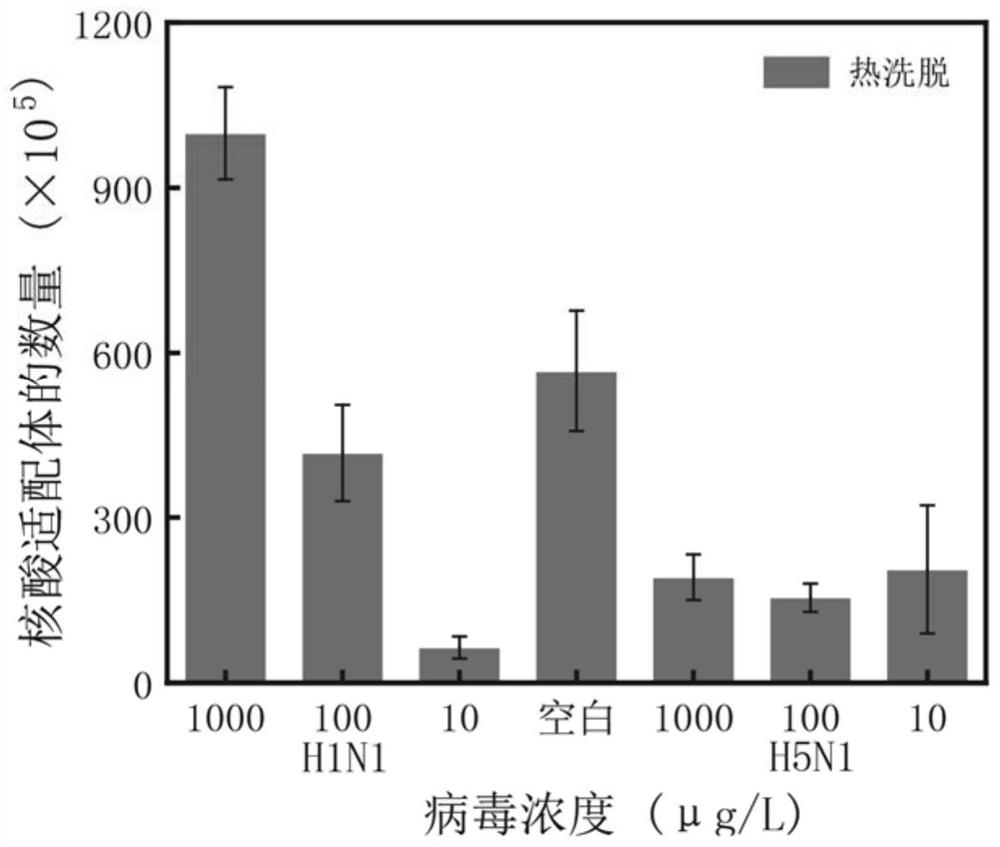H1N1 influenza virus detection method and kit thereof
A detection kit and influenza virus technology, applied in the field of biological analysis, can solve the problems of inability to detect H1N1 virus, poor reproducibility and anti-interference ability of electrochemical sensors, etc., achieve high reproducibility, low detection cost, reduce cost effect
- Summary
- Abstract
- Description
- Claims
- Application Information
AI Technical Summary
Problems solved by technology
Method used
Image
Examples
Embodiment 1
[0043] Embodiment 1. The present invention detects the method for H1N1 influenza virus based on qPCR technology
[0044] The sequence of the DNA aptamer P-A8S used in all the following examples is: 5'-GCAATGGTACGGTACTTCCATTCGACCTCTGTAACAGCCACGAAAACCCTATATC AAAAGTGCACGCTACTTTGCTAA-3'.
[0045] Such as figure 1 As shown, the present embodiment includes the following specific experimental steps:
[0046] 1) Activated magnetic beads
[0047] ① Mix the magnetic beads: place the carboxyl-coated magnetic beads on a rotary mixer, and mix at 7 revolutions per minute (rpm) for 15 minutes (min).
[0048] ② Cleaning of magnetic beads: Take 10 microliters (μL) of the above mixed magnetic beads in a 1.5 milliliter (ml) centrifuge tube, add 50 μL of 2-morpholineethanesulfonic acid (MES) buffer to wash, rotate at room temperature at 7 rpm, and mix thoroughly After 10 min, magnetic separation was performed, and the supernatant was discarded. A total of 3 washes.
[0049] ③ Activated magne...
Embodiment 2
[0057] Example 2. Verification of the feasibility of H1N1 virus detection based on qPCR method: detection and selectivity test of high-concentration H1N1 virus
[0058] This example is carried out according to the steps in Example 1, but 3) blocking is not carried out, and step 4) uses different incubation conditions: different concentrations of H1N1 or H5N1 influenza virus (1mg / L, 100μg / L, 10μg / L L), after incubating with the activated magnetic beads at room temperature at 6 rpm for 2 h, the centrifuge tube was placed in a refrigerator at 4° C. for further incubation for 12 h.
[0059] the result shows( figure 2 ), according to the method shown in Example 1 of the present invention, the H1N1 influenza virus of 1 mg / L can be specifically detected, and the number of nucleic acid aptamers combined with H1N1 is greater than that of blank and H5N1 at the same concentration. The experiment found that the blank was very high, and the coupling of H5N1 on the surface of magnetic bea...
Embodiment 3
[0060] Example 3. Optimizing the sealing conditions of the magnetic bead interface
[0061] In order to reduce the non-specific adsorption of nucleic acid aptamers on the interface and reduce the detection limit, we optimized the interface blocking conditions of magnetic beads. In addition to yeast tRNA and salmon sperm DNA, we added 0.1% Tween 80 to the blocking agent. The whole detection process is carried out according to the steps shown in Example 1. image 3 As shown, the combination of blocking agent and Tween80 can significantly reduce the non-specific adsorption of nucleic acid aptamers on the interface.
PUM
 Login to View More
Login to View More Abstract
Description
Claims
Application Information
 Login to View More
Login to View More - R&D
- Intellectual Property
- Life Sciences
- Materials
- Tech Scout
- Unparalleled Data Quality
- Higher Quality Content
- 60% Fewer Hallucinations
Browse by: Latest US Patents, China's latest patents, Technical Efficacy Thesaurus, Application Domain, Technology Topic, Popular Technical Reports.
© 2025 PatSnap. All rights reserved.Legal|Privacy policy|Modern Slavery Act Transparency Statement|Sitemap|About US| Contact US: help@patsnap.com



